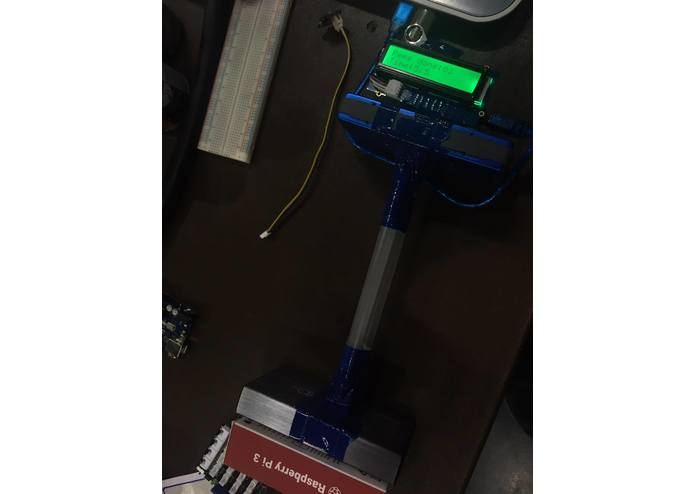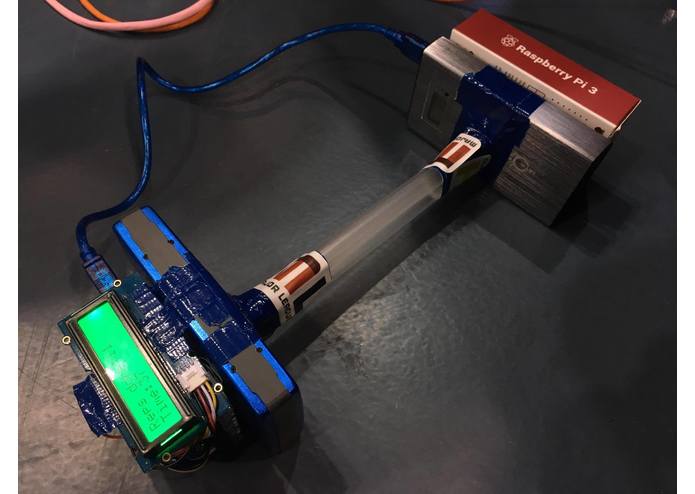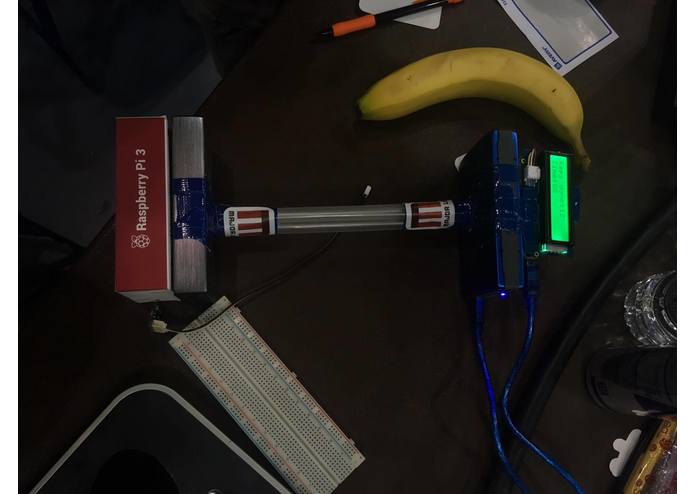Inspiration:
After we all met each other 8 hours before the hackathon, we discovered that everyone in the team enjoys being physically active in one way or another, whether it be cycling, swimming, or lifting weights.
What it does:
Our hack keeps track of your workout progress by counting your reps (repetitions) and also displays the time you've spent on your workout on an LCD screen. The screen also changes color (red to green) based on your progress.
How we built it:
For the hardware, we used an Arduino Uno with a 3-axis accelerometer, an LCD screen, portable battery banks, and a speaker. With duct tape adeptness, we mounted the Arduino apparatus and battery banks onto a plastic straw handle to create the dumbbell. Then with our combined coding capabilities we programmed the dumbbell to be less, "dumb"!
Challenges we ran into:
The biggest challenge we ran into was utilizing the accelerometer to obtain consistent readings and values. Our original algorithm involved calculating velocity and distance based on acceleration, which yielded inconsistent results due to random hardware error. We also found out that the accelerometer would only work if it was parallel to the XY plane. After struggling through rigorous trial and error, we modified the algorithm to only react to acceleration readings.
An initial challenge we encountered was getting the LCD screen to display strings. This was fixed by switching from 3V to 5V in order to get enough voltage to properly operate the LCD.
Accomplishments that we're proud of:
We are really proud that we were able to put together a fully functional prototype within 24 hours, even though majority of our members have previously never attended a hackathon. The commitment our team had in this single project idea that yielded a successful model, proved our hard work and determination in this hackathon.
What we learned:
We learned how to use the Arduino IDE and Arduino sensors/instruments to create a working model of our idea. Coincide, some of our team members learned the C coding language. We also learned how to use Arduino libraries to convert raw data from the accelerometer into useful data.
What's next for the Arduino Integrated Dumbbell:
The Arduino Integrated Dumbbell can be improved by using higher-quality sensors that provide more accurate data, which would allow us to successfully calculate velocity and distance, and improve the functionality of the dumbbell. With more measuring instruments, the Arduino Integrated Dumbbell could potentially even provide power output, calorie count, and integration with social media apps.









Log in or sign up for Devpost to join the conversation.